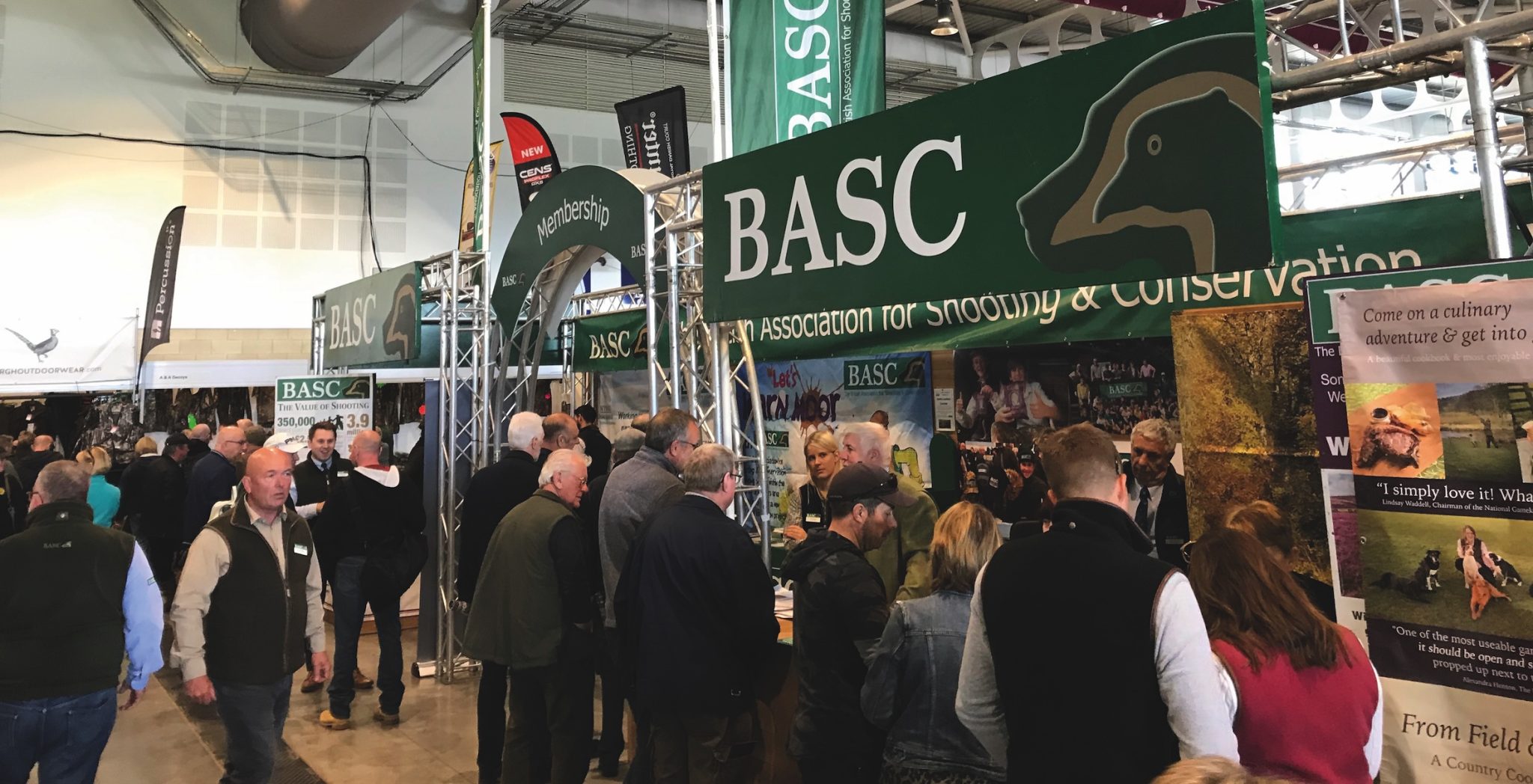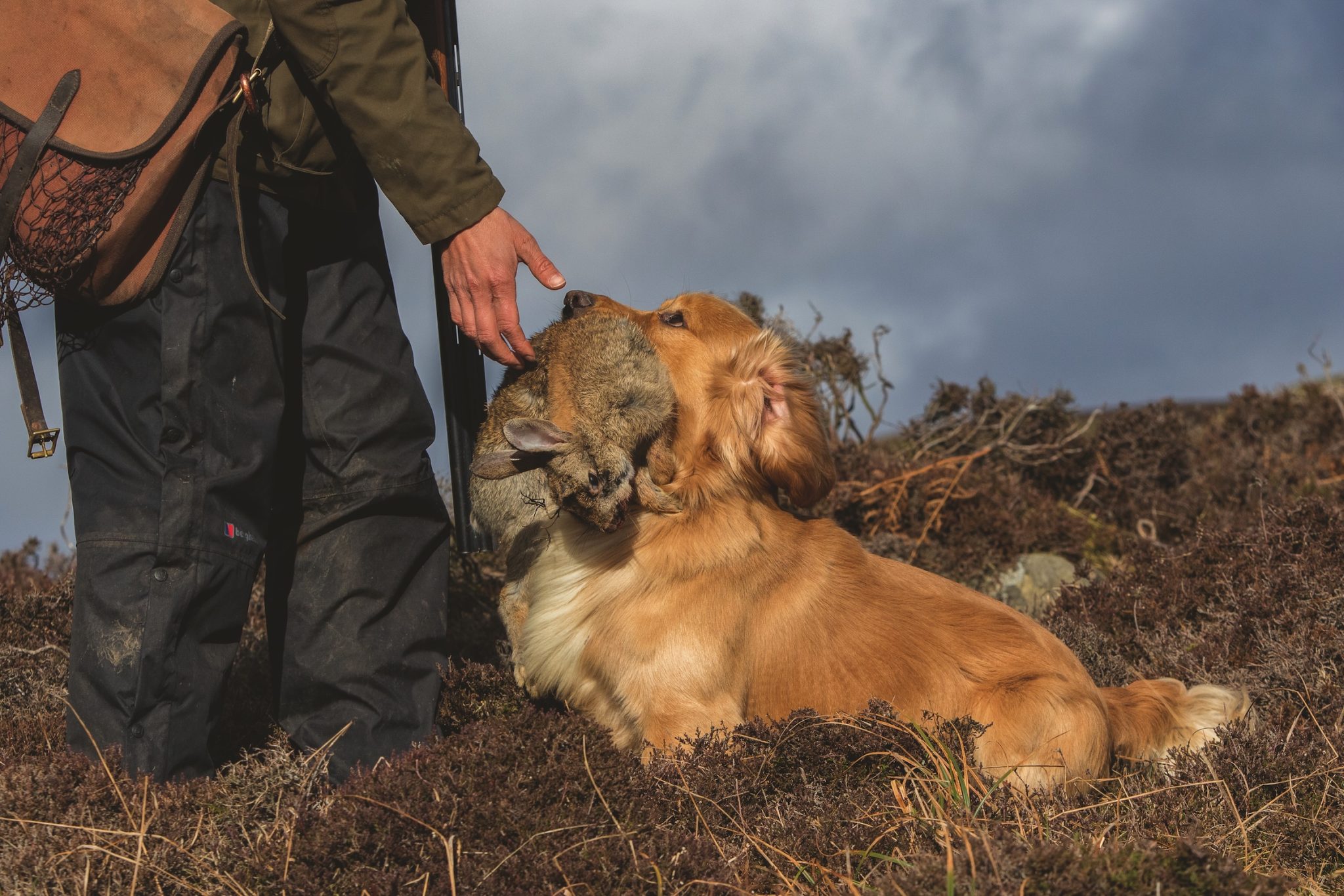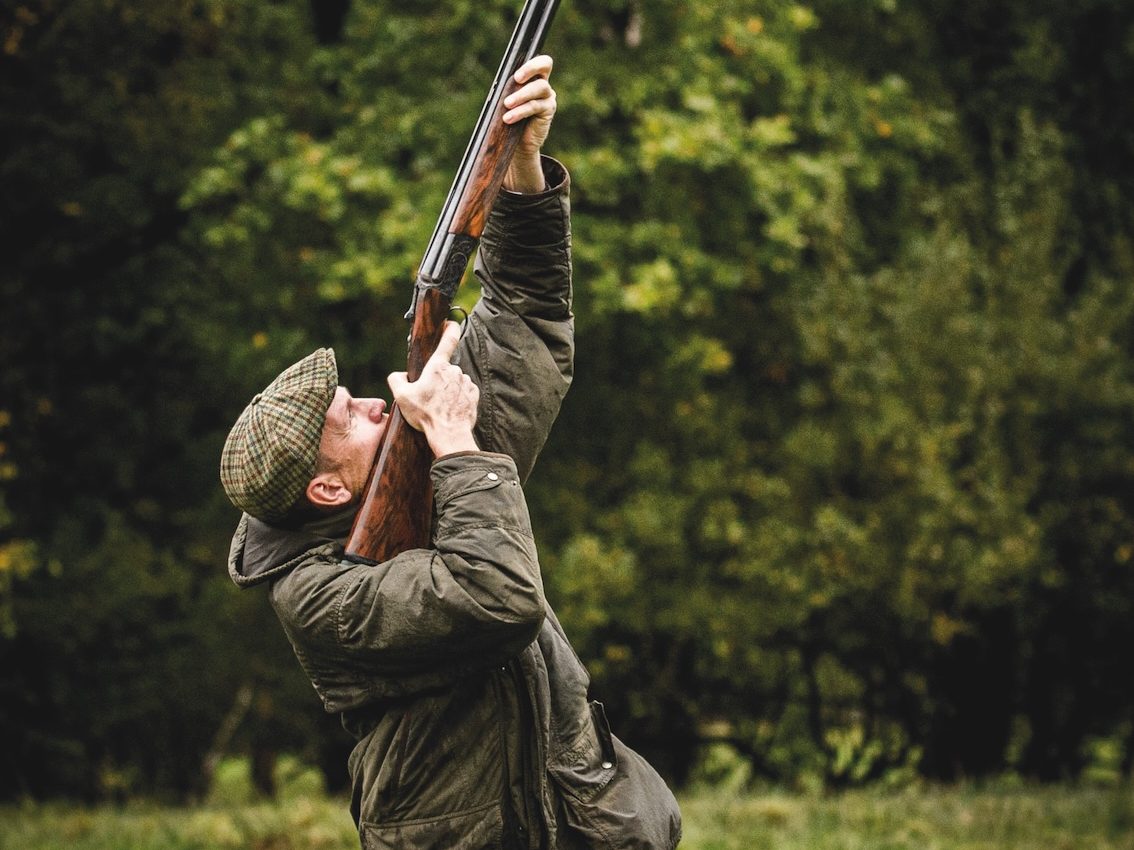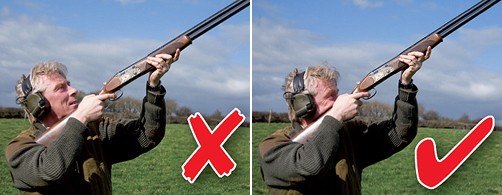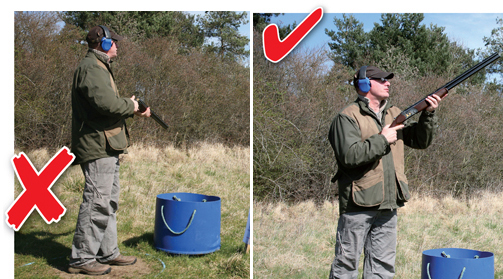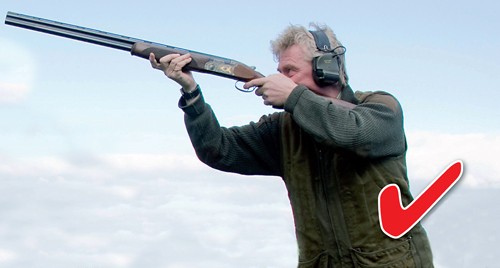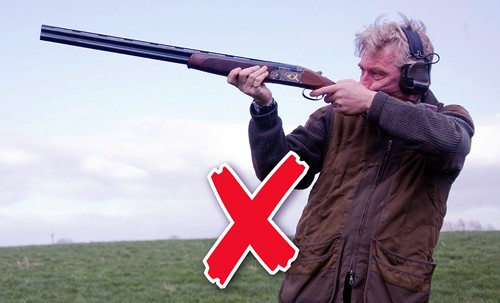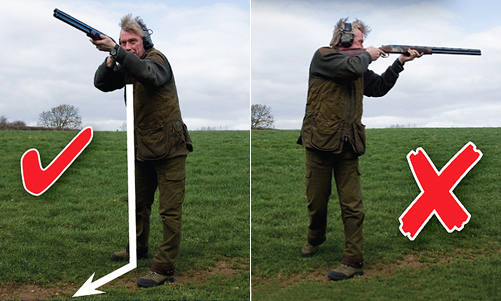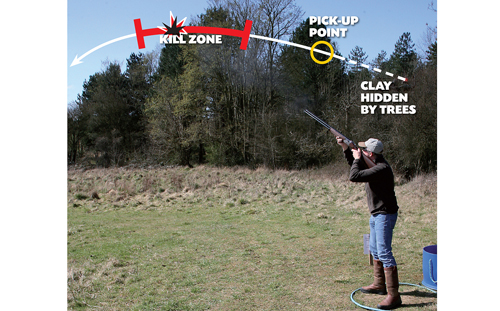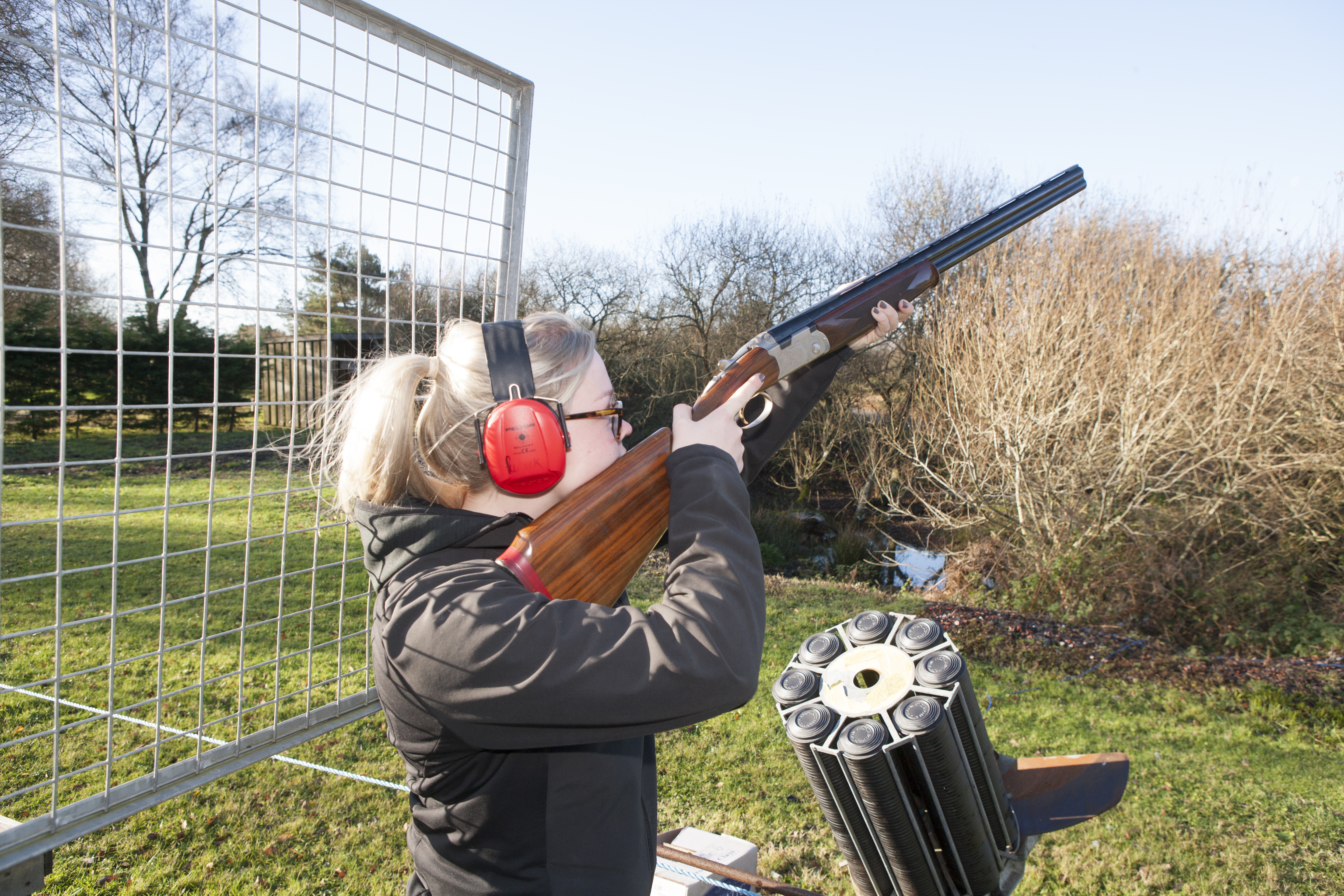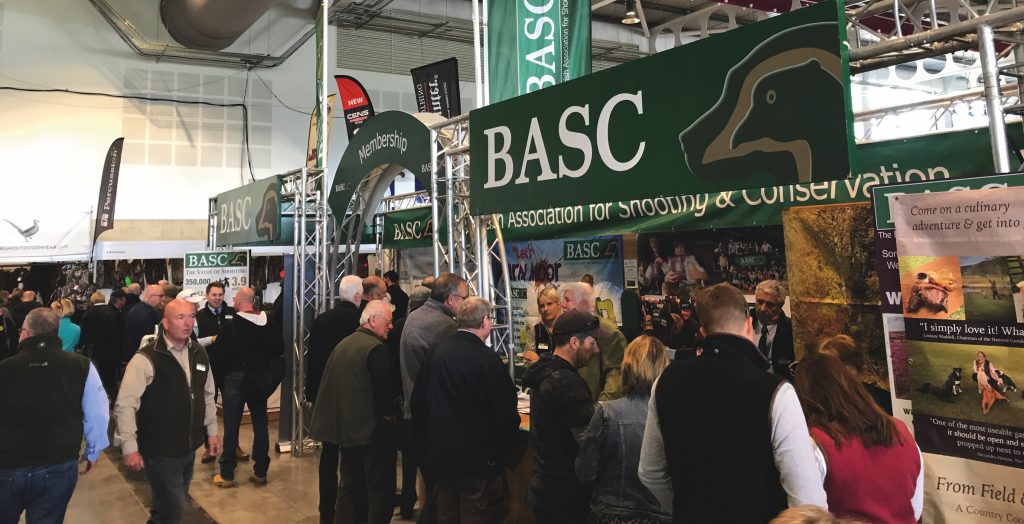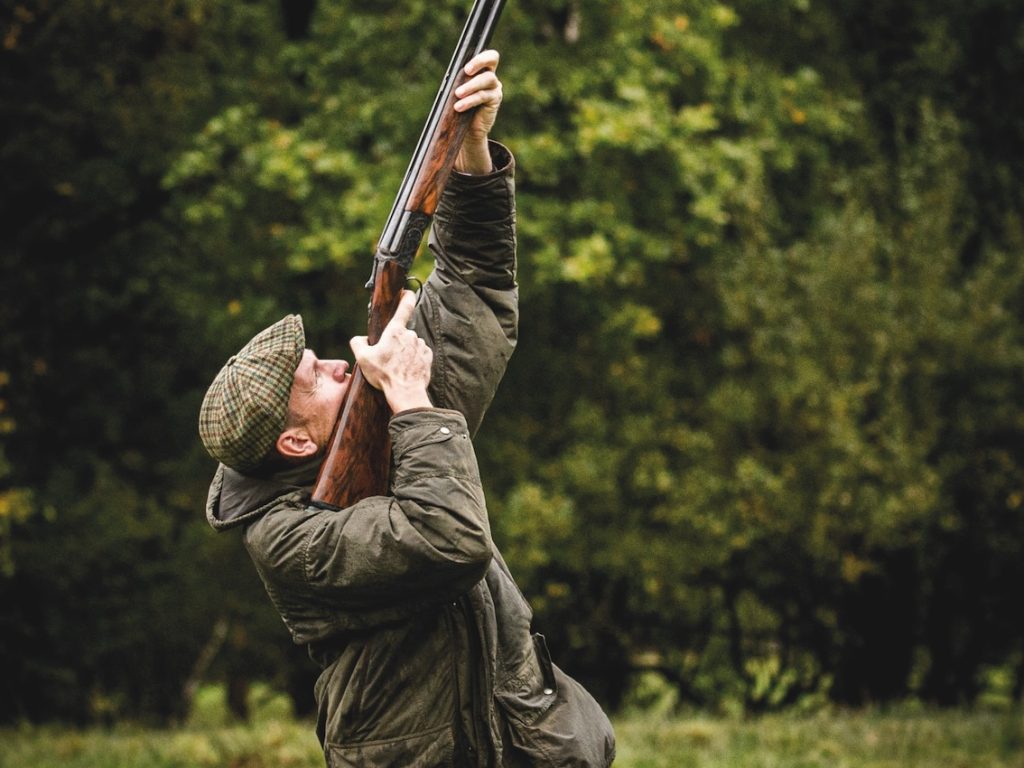Win CENS ProFlex DX5 earplugs worth £1,149 – enter here
Standing correctly to shoot clays is a key part of your technique. Here’s how to get it right.
The correct ready position when shooting increases your chance of hitting more clays.
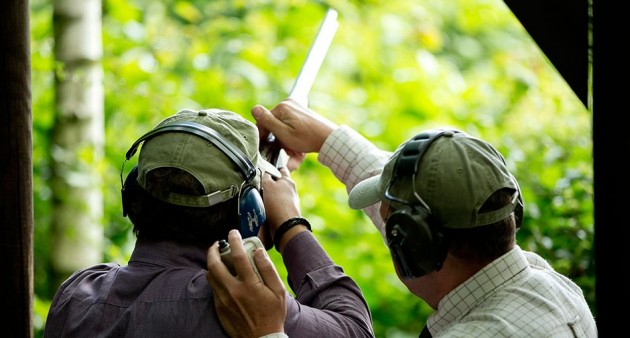
Want to ensure that you hit clays on a regular and reliable basis? Then you need to master the perfect ready stance for clayshooting. It’s a key technique for success and it’s just as important as getting your gun mount right.
Check your gun mount
Get in the correct ready position and you can look forward to watching your scores improve. Here’s our advice on stance, weight distribution and general preparation before, during and after you call for the bird.
The perfect ready stance for clayshooting
The first photo here is NOT the way to do it. The shooter has called for the birds – high, right to left crossers on report – and he hasn’t even closed the gun. Maybe he’s assuming that the clay will be in the air for so long that he’ll have plenty of time to get himself sorted out before he pulls the trigger! He’s also looking at where the bird is going to end up rather than where it’s going to appear. To make matters worse he’s standing in a way that certainly won’t allow him to swing onto, and through, the clay.
The second photo is much better. After missing the first pair the shooter has decided to concentrate. Now he ‘knows where they’re coming from’ he’s decided to get his weight more onto the front foot, close the gun and get the muzzles up near the flight line. In an ideal world he’d be looking back a little so that he could pick the bird up in the air a bit earlier.
How to get in the perfect ready stance for clayshooting
Don’t lean back when you’re shooting.
Leaning into the gun enhances the ease with which you swing the muzzles and everything will appear to come together naturally. The added bonus is that the effects of the ‘kick’ will be lessened. Assuming the gun is mounted properly you’ll hardly know the cartridge has been fired.
Lean back and if you’re badly off-balance you might even find yourself taking a step backwards after pulling the trigger.
The golden rule for the perfect ready stance for clayshooting is to have the toe of the front foot pointing towards the kill zone – the area where you intend to dust the clay. Also, when your feet are placed correctly you will be able to change your stance more easily to cope with the second bird of a pair, if a change in stance is needed.
If your feet are out of position you’ll always struggle to break targets consistently.
An example
Your leading foot is at three o’clock when you fire at the first bird.
Unfortunately, your front foot needs to be at 10 to have any chance of connecting with the second bird.
All about kill zones
- For any target there’s going to be the ideal kill zone. This is the perfect place to break the clay during its flight.
- Depending on the way the bird is presented this can be simply a matter of a few feet of travel – in heavy woodland, for instance, or several yards on an open, crossing target.
- Then there’s the pick-up point. This is the point on the flight path where your brain actually acknowledges the fact that the target is visible. Note that this is not the point where the bird comes into view; it’s slightly after this, as it takes a split second for your brain to comprehend the fact it can now see the clay.
- Obviously with a fast-moving target the bird will have travelled a certain distance even before you’re ready to pull the trigger. This is why it’s crucial to know exactly from where the bird is going to appear. Otherwise you’re going to be searching the sky, wasting valuable time looking in vain for the clay. When you know where the pick-up point is you can then set your muzzles accordingly.
- We’ve ascertained why you need to have the gun in, or just out of, the shoulder pocket as you call for the bird – but what’s the point of getting this all correct only to have the muzzles pointing at the ground ten feet in front of you – especially when the target in question is a high driven bird?
- In an ideal world the muzzles must be positioned just under the flight line. Having the muzzles too high above the path of the bird will obscure the bird with the barrels.
- This in turn means that you’ll have to falter, lower the gun a fraction and then carry on with your swing. Hold the muzzles too low, however, and you’ll end up with an up, up and away swing – almost a guaranteed miss on your score card as you’ll be playing catch up from the moment you start.
- Make sure the gun is not canted over at an angle at your ready position. If it is you’re really making things more difficult. The gun will have to be straightened before, or during, its short travel up to your shoulder. It’s an incredibly common fault. But once this style mistake has been pointed out to a shooter they rarely make the same mistake again.
Not only does the position of the muzzles need to be correct with respect to the bird, but they also need to be correct in relation to your foot position. If your feet are okay the muzzles should naturally find the ideal position.
Watching targets
Shoot the same stand twice. First off, call for the birds and shoot without any prior knowledge of how the bird is going to be presented.
See how you get on and make a note of your score. If there’s no one waiting then shoot the same layout again (or get back as soon as you can) this time with the benefit of knowing where the birds are going to be in the air.
The difference in your scores (there will be a difference) will teach you the importance of watching the targets before you call for the bird.
The wrong way
If you find there’s a stand on which you’re reasonably confident, it might be worthwhile experimenting by deliberately shooting the ‘wrong’ way.
This should emphasise how much better your scores can be when you do it properly and it will improve your shooting in the long run.
Related Articles
Get the latest news delivered direct to your door
Subscribe to Shooting Times & Country
Discover the ultimate companion for field sports enthusiasts with Shooting Times & Country Magazine, the UK’s leading weekly publication that has been at the forefront of shooting culture since 1882. Subscribers gain access to expert tips, comprehensive gear reviews, seasonal advice and a vibrant community of like-minded shooters.
Save on shop price when you subscribe with weekly issues featuring in-depth articles on gundog training, exclusive member offers and access to the digital back issue library. A Shooting Times & Country subscription is more than a magazine, don’t just read about the countryside; immerse yourself in its most authoritative and engaging publication.



